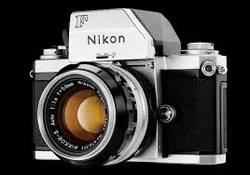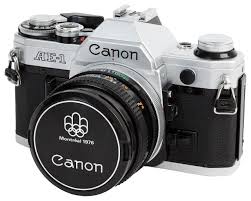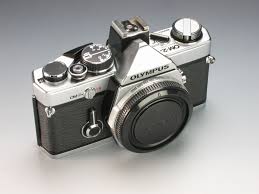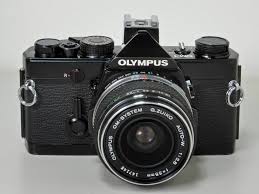 Nikon F2AS w/ DP-12 Finder Nikon F2AS w/ DP-12 Finder Updated Aug. 30, 2021 When Nikon introduced the F2 in the autumn of 1971, its predecessor, the Nikon F, was still in high demand. In fact, 1970 had seen the highest ever level of production for the F, with over 100,000 units made. Nikon had intended to cease F production with the deployment of the F2, but demand for the F proved so great that two years elapsed before they were able to discontinue it for good. That is quite a testament to the popularity of the F and is also indicative of the tendency of professional photographers to stick with what is familiar and trusted. A similar thing had happened with the F itself when Nikon wanted to cease production of its rangefinders in 1959. Demand by photographers doubtful of the newfangled SLR and comfortable with their rangefinder cameras caused Nikon to keep them in limited production until 1965. Now history was repeating itself. So how could the F2 possibly compete with its already legendary forebear? By being a better camera, that's how. How much better? Let's find out...
15 Comments
 Nikon F w/ 50mm f/1.4 Auto Nikkor Nikon F w/ 50mm f/1.4 Auto Nikkor Updated July 25, 2019 Nikon has been in the SLR business since 1959. Which means there are plenty of choices as far as selecting a vintage camera body goes. Nikon initially marketed mostly to professionals. But in 1962 they entered the amateur market as well, and by 1979 they had three descending tiers: professional, enthusiast, and consumer which they maintain even today. Let's kick it off with the granddaddy of them all...the SLR that put Nikon on the map.  1976 Olympic Edition Canon AE-1 1976 Olympic Edition Canon AE-1 1976. A watershed moment in the history of the SLR (single-lens-reflex) camera. The year when, depending on your point of view, camera design and manufacturing quality began its slide into a pit of oblivion, or ushered in a new era of affordability and convenience, opening the doors of SLRdom to a whole new audience. Or maybe, like me, you can feel a bit of both ;-). Either way, the camera responsible is none other than the Canon AE-1, the best-selling film SLR of all time. To appreciate the impact that the AE-1 had on 35mm photography, it serves us well to remember the context of its arrival and subsequent domination of the market. Prior to the AE-1, SLRs had been the choice of professionals (particularly photojournalists) and enthusiasts, people who were not interested just in snapshots, but in the craft and art of photography. Having control over the different parameters of exposure was very high on their list of priorities and the SLR gave them that, as well as access to a wide variety of lenses and accessories. For the average consumer, whose top priorities are convenience and affordability, that was waayy too much camera for waaayyy too much money! Thus the conundrum Canon was facing by 1974: a small, nearly-saturated enthusiast SLR market versus a huge consumer (mass) market that up to this point was untouchable for reasons of cost and convenience. What could be done?
 Olympus OM-2 of 1975 Olympus OM-2 of 1975 The impact of a leap in technology is often best measured in the reaction of one's competitors rather than only in market-share or some other basic metric. The Olympus OM series of SLRs are a case in point. While Olympus certainly did grab a nice chunk of market share in the mid 1970's, it was the changes that their fellow manufacturers made in their own designs that define the introduction of the OM-1 as a pivotal point in SLR history. Within five years of the introduction of the mechanical OM-1, followed three years later by the electronic OM-2, the other members of the now Big 5 (Minolta, Pentax, Nikon, and Canon) had all brought out their own downsized and/or lighter-weight models. Five years seems like an eternity in today's marketplace, but back then product cycles normally lasted much longer. Take, for instance, the Pentax Spotmatic. Introduced in 1964, with slight updates in 1971 and 1973, it maintained its layout and dimensions and gained 20 grams of weight until its discontinuation in 1976, 12 years later. The Minolta SR-T 101, which came out in 1966, was produced in the same basic form for 15 years. For over 14 years, the Nikon F hardly changed. Product development also took much longer, without all of the computer modelling and simulation available today. Prototypes were hand-built and tested, and re-built and re-tested many times, before being put into production. So, the fact that within 4 to 5 years these companies all brought out new models, often replacing a full-size model that was only 2 or 3 years old, speaks volumes as to the disruption the OMs caused.  Olympus OM-1 of 1973 Olympus OM-1 of 1973 We have Kodak and Leitz (maker of the Leica) partially to thank for the shrinking of 35mm SLR (single lens reflex) cameras in the 1970s. If it weren't for the obstinacy of the former and the inspiration of the seminal IIIf & M3 models produced by the latter, we may never have seen one of the most influential SLRs in history, whose consequence is still affecting the camera industry. Let's take a trip back to the late 1960s and the birth of the Revolution...you know it's gonna be...all right...all right...all right... |
C.J. OdenbachSuffers from a quarter-century and counting film and manual focus SLR addiction. Has recently expanded into 1980's AF point and shoots, and (gack!) '90s SLRs. He even mixes in some digital. Definitely a sick man. Categories
All
Archives
June 2024
|
 RSS Feed
RSS Feed